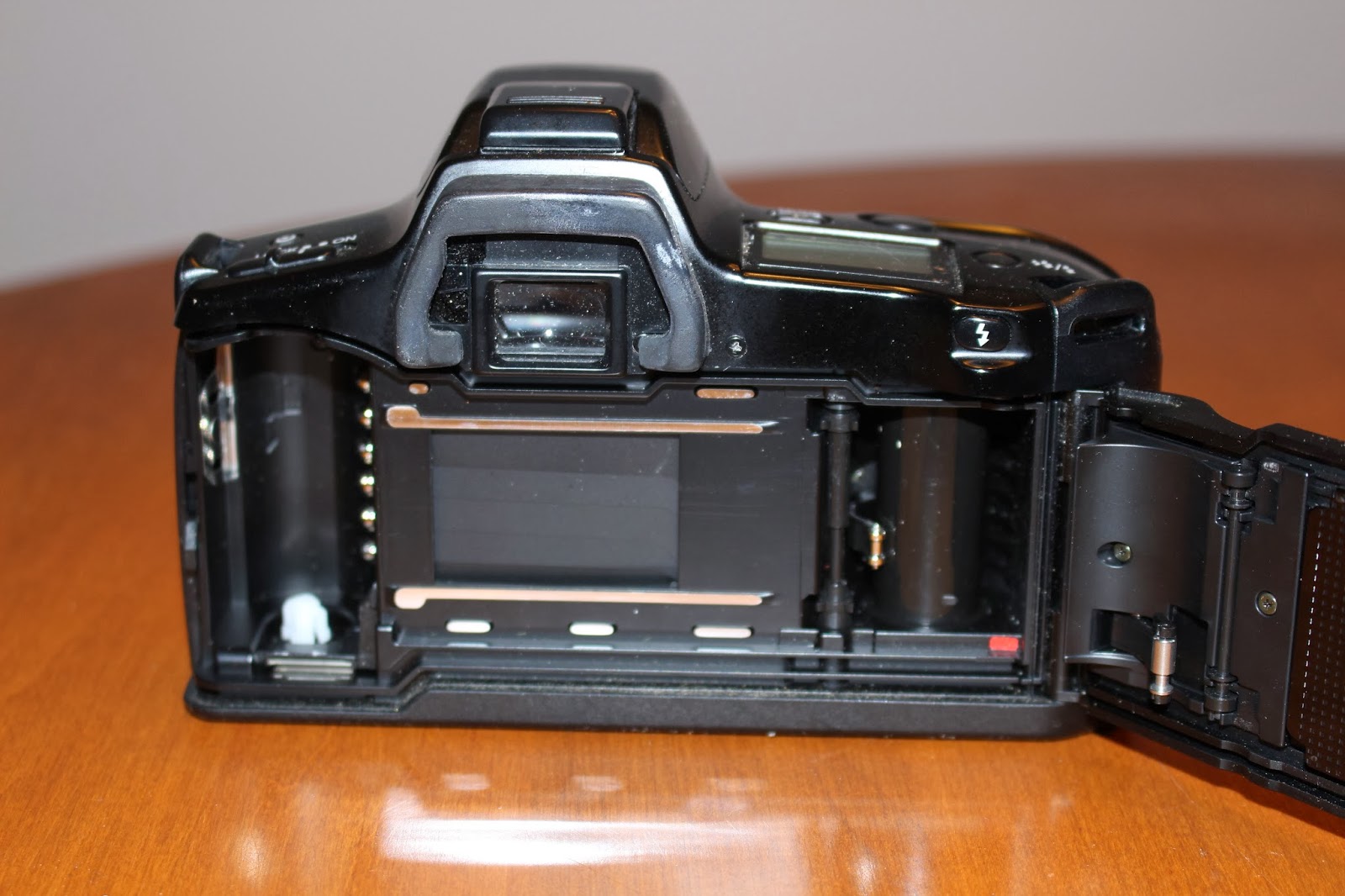 |
| There are two metal strips at the very front of the camera's hand grip. The camera's circuitry cannot work unless the fingers of the operator touch both those strips. |
 |
| This shows the bottom of the camera, where you can see the serial numbers for the camera body and the lens. You can see the tripod mounting hole and a lid for the battery that powers the camera. |
 |
| This shows the camera with the back door open. |











No comments:
Post a Comment